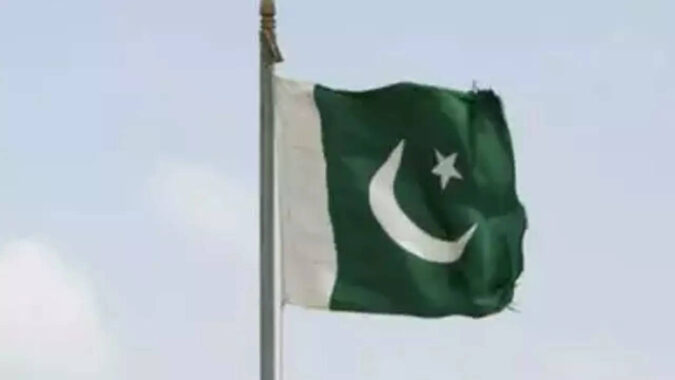KARACHI: The Pakistani rupee’s two-day decline slowed on Friday on news that an IMF team was visiting Islamabad next week to discuss unlocking a suspended bailout package, though the currency still closed at a record low against the US dollar.
The rupee closed at 262.6 per dollar in the interbank market, down 2.7%, on Friday, after a 9.61% slump on Thursday, which was its the biggest single-day dip, according to the central bank.
The rupee has been dropping to adjust to a market based exchange rate after an artificial upper cap on the local currency was lifted in line with IMF reforms.
Left with only $3.68 billion in foreign exchange reserves, Pakistan barely has enough to cover three weeks of imports, and desperately needs the IMF to release the next $1 billion tranche of its bailout programme to head off a potential default.
The IMF said on Thursday that its delegation would visit Pakistan from January 31 to February 9, leaving Prime Minister Shehbaz Sharif optimistic that the disbursements would start flowing again.
“An agreement with the IMF, God willing, will be done… We will soon be out of difficult times,” Sharif said at an event in Islamabad.
A $6 billion IMF package was agreed in 2019, and topped up to $7 billion after last year’s devastating floods, but disbursements were suspended in November due to the government’s failure to do more to reduce its fiscal deficit.
The IMF wants the government to commit to more substantial fiscal measures, and once it decides to resume lending, other multilateral and bilateral lenders are expected to offer more funding to the politically unstable, nuclear-armed South Asian nation.
Former finance minister Miftah Ismail told Geo TV that the unlocked funding from the IMF would help head off the risk of Pakistan defaulting on its external obligations.
This week’s plunge in the rupee’s value will pile pressure onto Pakistan’s population who are already facing high prices of imported food and fuel.
On Friday, the rupee fell 1.1% on the open market to trade between 263-265 per dollar, the Exchange Currency Association of Pakistan said. The closing rates of the open market – which are different to the official rate – are yet to be finalised for the day.
The removal of the cap has resulted in the two markets aligning more closely, and exchange companies expected a black market in dollars to eventually dry up.
The Pakistan Stock Exchange‘s benchmark index weakened 0.31% on Friday, having gained 2% on Thursday in anticipation of encouraging news from the IMF.
“Meetings with IMF mission are expected to start from 31 January, the currency may consolidate with the expectations of fresh inflows,” Tahir Abbas, head of research at local brokerage house Arif Habib Limited, told Reuters.
The rupee closed at 262.6 per dollar in the interbank market, down 2.7%, on Friday, after a 9.61% slump on Thursday, which was its the biggest single-day dip, according to the central bank.
The rupee has been dropping to adjust to a market based exchange rate after an artificial upper cap on the local currency was lifted in line with IMF reforms.
Left with only $3.68 billion in foreign exchange reserves, Pakistan barely has enough to cover three weeks of imports, and desperately needs the IMF to release the next $1 billion tranche of its bailout programme to head off a potential default.
The IMF said on Thursday that its delegation would visit Pakistan from January 31 to February 9, leaving Prime Minister Shehbaz Sharif optimistic that the disbursements would start flowing again.
“An agreement with the IMF, God willing, will be done… We will soon be out of difficult times,” Sharif said at an event in Islamabad.
A $6 billion IMF package was agreed in 2019, and topped up to $7 billion after last year’s devastating floods, but disbursements were suspended in November due to the government’s failure to do more to reduce its fiscal deficit.
The IMF wants the government to commit to more substantial fiscal measures, and once it decides to resume lending, other multilateral and bilateral lenders are expected to offer more funding to the politically unstable, nuclear-armed South Asian nation.
Former finance minister Miftah Ismail told Geo TV that the unlocked funding from the IMF would help head off the risk of Pakistan defaulting on its external obligations.
This week’s plunge in the rupee’s value will pile pressure onto Pakistan’s population who are already facing high prices of imported food and fuel.
On Friday, the rupee fell 1.1% on the open market to trade between 263-265 per dollar, the Exchange Currency Association of Pakistan said. The closing rates of the open market – which are different to the official rate – are yet to be finalised for the day.
The removal of the cap has resulted in the two markets aligning more closely, and exchange companies expected a black market in dollars to eventually dry up.
The Pakistan Stock Exchange‘s benchmark index weakened 0.31% on Friday, having gained 2% on Thursday in anticipation of encouraging news from the IMF.
“Meetings with IMF mission are expected to start from 31 January, the currency may consolidate with the expectations of fresh inflows,” Tahir Abbas, head of research at local brokerage house Arif Habib Limited, told Reuters.
